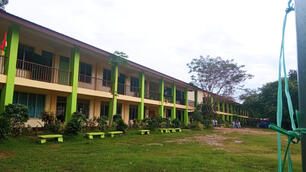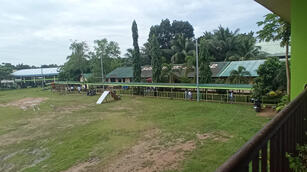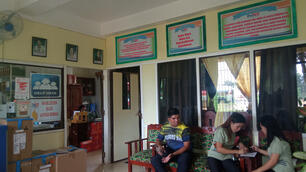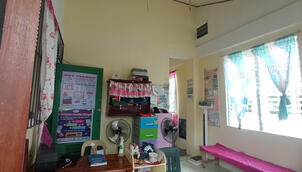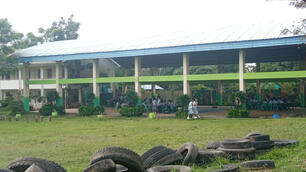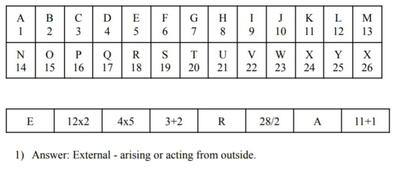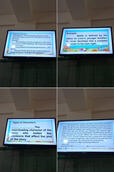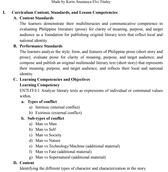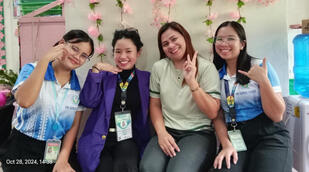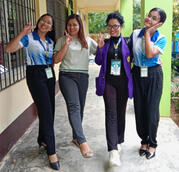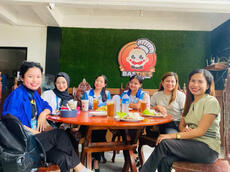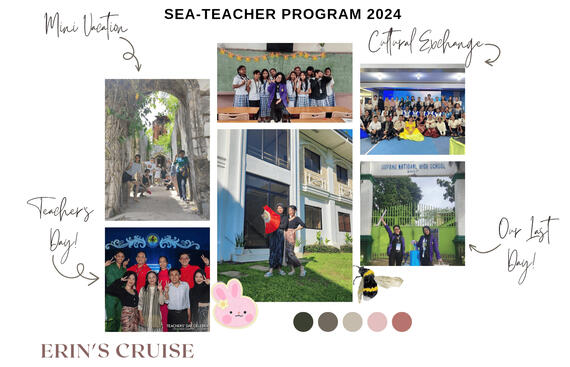
Kerin Anastasya E. T
An English Education student from Universitas Pakuan, Bogor, IndonesiaThis is my SEA-Teacher Journey!
Supang National High School is a public school supported by the Department of Education of Guimaras and the government. Within the school area, there are junior and senior high schools. The junior one consists of grades seven to nine, while the senior one is from ten to twelve, in separate buildings. In addition, the school provides its learners with classrooms, a track field, a gym, a library, and a clinic for their everyday school needs. As of today, Collins Navitidad currently leads the school as the principal.
The teaching internship at Supang NHS for students from Universitas Pakuan started on October 8th and ended on October 25th. During the first week of the internship, I found a difference in the implementation of the junior high curriculum, specifically in grades 7, compared to 8 and 9. In grade 7, they use the Matatag Curriculum; for grades 8 and 9, they use K-to-12. Within these classrooms, there are still conventional teaching aids, such as chalkboards, textbooks, and bulletin walls, to aid the students with their studies or understanding of specific subjects. There is even a TV and projector to help with the audio-visual learning.
★. Pedagogical contents.
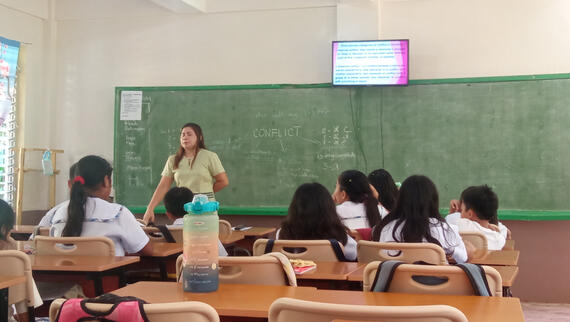
Teaching observation w/ Ma'am Pamela.
My cooperating teacher, Pamela Gallego Celestial, assigned me to teach grade seven throughout the internship. The first thing I noticed from the observation was the 45-minute time spent teaching each class and the fact that she had five classes daily with the same schedule.The teaching approach throughout the class was student-centered, which focused on the students’ interactions, their progress in learning, and fun activities for the class to participate in. In addition, to support the learning activities, the teacher used textbooks, stories, presentations, and games to make teaching-learning activities more engaging. When it comes to using stories, the teacher used stories from the Philippines to foster literature and cultural learning for the students. The teacher also implemented social issues to help students understand and use the learning material in everyday life. For instance, she used social studies or self-discovery as examples within the material, as the outcome, or why the students must remember the topic they learned that day. Integrating such lessons makes the topic more ‘important’ and more authentic. It is something that I have not done or seen before; hence, it gave me significant insight into teaching.More importantly, the teacher found a way to use math in her lesson (whether through vocabulary building or by giving away points to specific groups in the classroom). The teacher would ask the students to solve incomplete vocabulary or receive points using mathematical problems. Other than that, to check on the time, the teacher taught the students not to use their phones and instead learn to read the conventional clock within the class. It may be simple and trivial, but not everyone can do it. For me, it was an eye-opening experience.
Teaching material sample from coop-teacher.
The teacher will use outside sources to help her develop the lesson plan and the overall lesson for the students to learn during that period, whether with the help of the textbook, YouTube, or even the internet. However, due to the lack of internet within the school area, the activities are limited to conventional teaching and games. If video or audio is needed to stimulate audio-visual learning, the teacher must download the material to their laptop or use a USB card to connect it to the television within the class.When it comes to scoring rubrics, it depends on the type of assignment given by the teacher. However, scoring rubrics taken from Google are permitted. After all the teaching and playing, there will be a simple assessment to measure students’ understanding by giving them assignments or quizzes (formative assessment). Usually, the quizzes are in the form of simple multiple-choice questions, fill-in-the-blanks, or simple question-and-answer.Afterward, at the end of the lesson, each class will always have learners' takeaways and reflections at the end of every lesson. With this, the learners should be able to jog their memories regarding the lessons they have previously learned and realize the importance of knowing each topic.
★. Teaching plan.The government and the Department of Education in the Philippines designed the Matatag Curriculum assigned to grade seven. They divided the lessons into four quarters that students must complete within a specific period. Thus, the teacher must pick from numerous provided topics the one topic they would like the students to learn. The teacher must consider using Bloom's taxonomy to match their students’ needs when constructing their lesson plan.As I received the lesson exemplar that the teacher used during the first week of my arrival at the school, I noticed that it is necessary to write down the details of the lessons, beginning from Curriculum Content, Standards, and Lesson Competencies in section one, Learning Resources in section two, Teaching and Learning Procedure in section three, Evaluating Learning in section four, and Assignment as the last section. The details in this particular exemplar are similar to the lesson plan I learned in Indonesia, Kurikulum Merdeka. In Kurikulum Merdeka, there are three sections: Pre-activity, While-activity, and Post-activity. Within each section are details as to what the teacher will do, written in detail and in order. Hence, it was easy for me to adapt and write one of my own. Within the weeks of the internship, I wrote two lesson plans, following the same format from the Matatag Curriculum and with guidance from my cooperating teacher. I added a game to the beginning of the lesson as a warm-up exercise and video analysis in the middle of the activities to make learning more entertaining for the students.
In two lesson plans, I decided to integrate the topic of ‘consequences of an action’ throughout my lessons. With that in mind, I often ask students questions that trigger their critical thinking. For instance, “What would be the aftermath of doing X action?” or “What would you do if X scenario happened to you?” As a result, the students are much more eager to answer and partake in the discussions.
★. Teaching practice.During the past few weeks, some routines have always been the same when I taught the students. It would always start with introducing the topic, the objectives, or the games as a warm-up activity. As the teaching duration was relatively short, one lesson plan would take at least three or four days to finish, depending on the situation and circumstances.
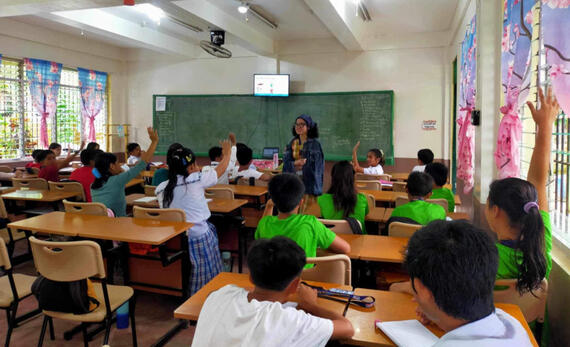
My teaching period.

